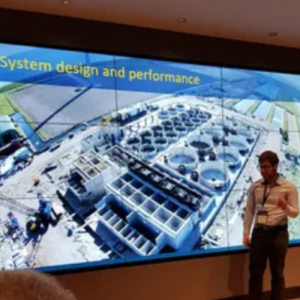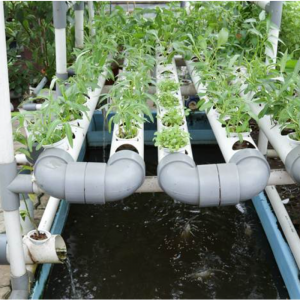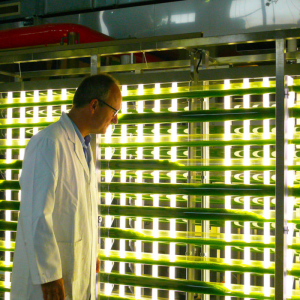
Bluegrove Aims to Change Aquaculture Via Technology – Starting with Salmon
| Mon, 20 Jul 2020 - 12:18
Norway-based aquatech firm Bluegrove – formed at the end of June between aquaculture technology firm CageEye and fish farming equipment maker NorseAqua – is aiming to use modern technology and computing solutions to revolutionize the aquaculture industry.
Using “Internet of Things,” machine learning, and more advanced technologies, the company is setting its sights on the shrimp aquaculture industry, among other markets. But first, the company plans to solidify its base, and the industry that gave it its start: salmon aquaculture.
“Chile is our first overseas port of call. We had planned to move into several other markets this year, we should have been at Aquaculture UK in May, but COVID-19 put that on hold, for example. So we’ll probably be looking to expand later this year or early next year,” Sunil Kadri, CageEye’s director of international business development, told SeafoodSource.
Kadri said the company also sees shrimp aquaculture as "ripe for development.'
“It has lots of potential improvements to make. The shrimp industry is huge, there’s lots of farms out there, with a lot of area dedicated to farming, with a wide range of tech development, starting with the very basic,” he said. "Then you’ve got other areas like tilapia and pangasius."
Also Read: Acoustic Feedback Improves Automated Feeding Systems for Shrimp
For the moment, in Chile, Bluegrove is running two projects.
“In both cases, we chose the companies as we felt they had the right culture to do this, so there’s been close interaction with management and the people in the field. We’ve established communication groups, we have a staff member in Norway who actually studied in Puerto Montt [in southern Chile], and her background is fish. She keeps the daily rapport with the people at the site feeding the fish. So there’s a direct communication with them to help them realize the value of the technology. Not just understanding it, which you get with training, but also seeing its full potential,” Kadri said, refraining from naming the companies with which Bluegrove is working.
Chile has, according to Kadri, some advantages and disadvantages for the company’s plans, and sometimes those two things go hand-in-hand.
“Chile is still a bit behind when it comes to infrastructure, but that’s being addressed, and where some may see an advantage, but I see as a disadvantage, is they have very low-paid staff at the sites [who are] directly interacting with the fish,” he added. “As we become more technologized and more automated so that the humans are interacting with the fish through technology or directly, in order to ensure we get the best outcome, we need to invest in the people. I’ve always said that. You need people who are properly educated and trained, and happy at their jobs, and they’re able to make use of the tools available.”
In aquaculture, Internet of Things (IoT) enabled environmental sensors can help farmers understand the impact of wind conditions, water temperature, oxygen content, and water currents. Combining hydroacoustic sensors with machine learning helps read the behavior of the fish and respond to their feeding requirements. The result is that less feed is required to effectively attend to a larger mass of fish.
Currently, Bluegrove’s core technology focus is on feeding, but the other area that it is capable of providing information on is monitoring of fish health and welfare, Kadri noted.
“It will be in a second stage, that kind of analysis needs to be done manually or watched on the screen. It’s an area of development that’s in our pipeline and high on the list,” he said. “The machine can recognize a pattern at daytime, night time, high tide, low tide, and when there’s a deviation from that pattern, even a small change, the system can provide an alert to the fish farm. That’s one area, the other is that as the machine learns more, it can begin to predict disease, sea lice, or algae blooms. All of these things that are big on fish behavior. That’s the other area we’ll go into with this core technology.”
Also read: Technology Allowing Aquaculture To Do Social Distancing
The executive highlighted Chile’s explosive salmon industry growth in the mid-2000s and the resulting environmental degradation.
“At that point, I asked if you’re growing so fast, how can you maintain biological control of the systems?" he said. "Within a year the whole system collapsed with disease."
Reduced waste of feed, together with integrated multitrophic aquaculture – where fish byproducts, including waste, are reused as fertilizers or food in another area – can contribute to regeneration, he said.
Bluegrove has lofty goals. According to company CEO Bendik Søvegjarto, it was created to help provide sufficient food with the global population expanding to 10 billion people by 2050, with the resulting demand for food soaring.
“As population growth escalates, we must find ways to provide nutritious and protein-rich food from the world’s finite resources,” he said in a press release. “It is therefore essential that we increase seafood production in ways that are not only sustainable but also cost-effective. Cost reductions will obviously make seafood producers more competitive and more profitable, even as the seafood they make becomes more affordable for their customers.”
The endeavor looks to take a step further in IoT – where everything that can be measured, is measured – which in agriculture translates into satellite images helping food producers detect storms, droughts, and floods before they occur, in order to act accordingly. In aquaculture, besides understanding environmental conditions, machine learning can aid farmers in interpreting fish behavior and help farmers respond to their feeding requirements.
Also read: A Practical Guide to Using AI in Aquaculture
Bluegrove said its technologies help shape the Internet of Species (IoS), which has the potential to bring on an ecological revolution in agriculture, aquaculture, and forestry, where humans’ needs merge with those of other species and nature more broadly.
“As technological solutions spread and as more farmers learn to gather, analyze, and respond to data, both agriculture and aquaculture become more efficient. This will result in the provision of billions of additional meals every year, without increasing the acreage farmed, without increasing the number of farmed animals and fish or other maritime species, and with only slightly increasing the volume of feed required,” Søvegjarto wrote in an article published on Medium. “It will be done while simultaneously protecting the environment and improving the health and welfare of both animals and fish. Farmers will make more money and create more jobs and prosperity, even as prices fall to make food affordable for more people … Sustainable farming, both on land and at sea, offers the solution.”
Alongside the founding of Bluegrove, the company announced the launch of the Bluegrove Foundation, which will look to work with local communities in creating healthy environments and optimizing sustainable food production, both at sea and on land.
Source: Seafood Source






















